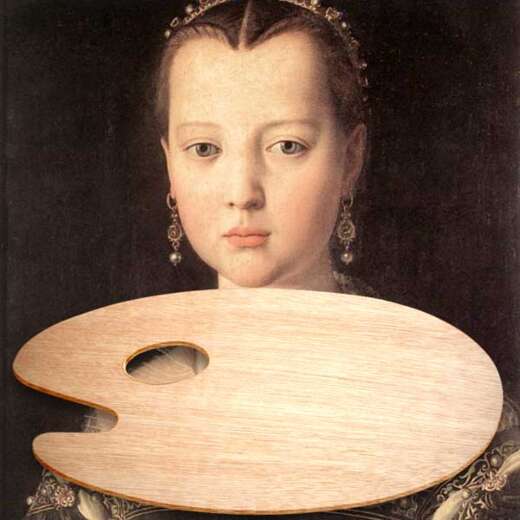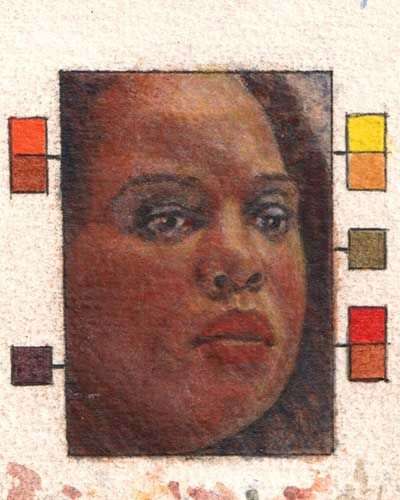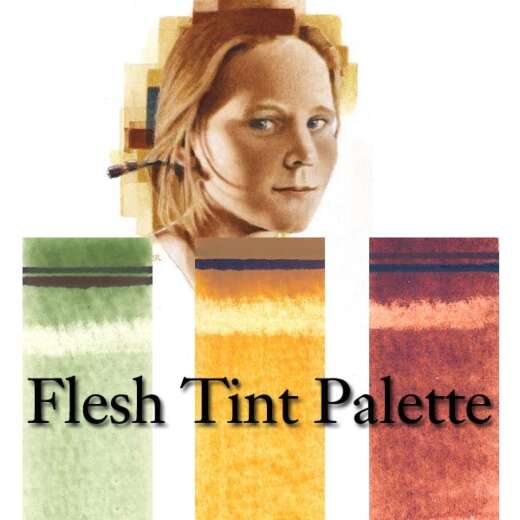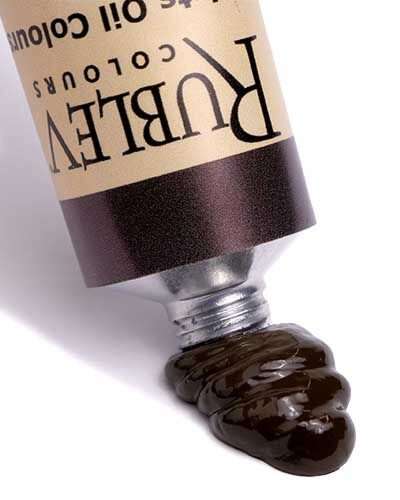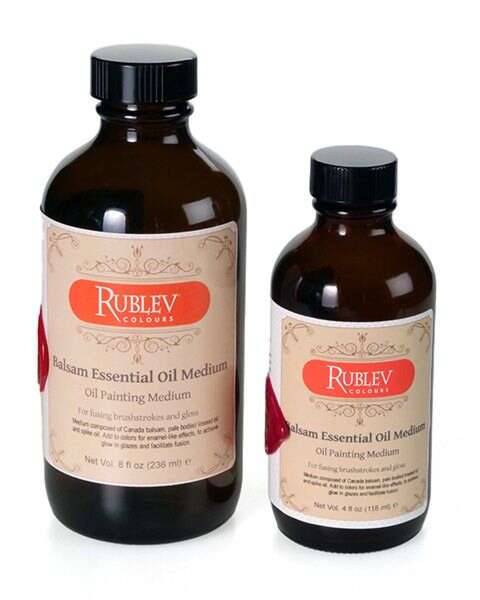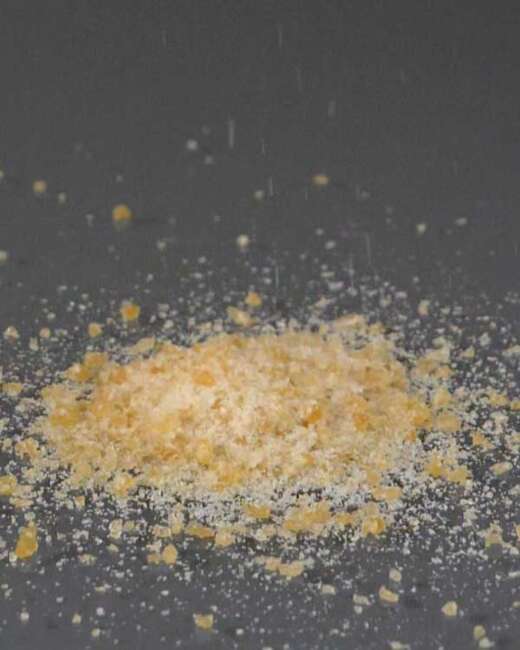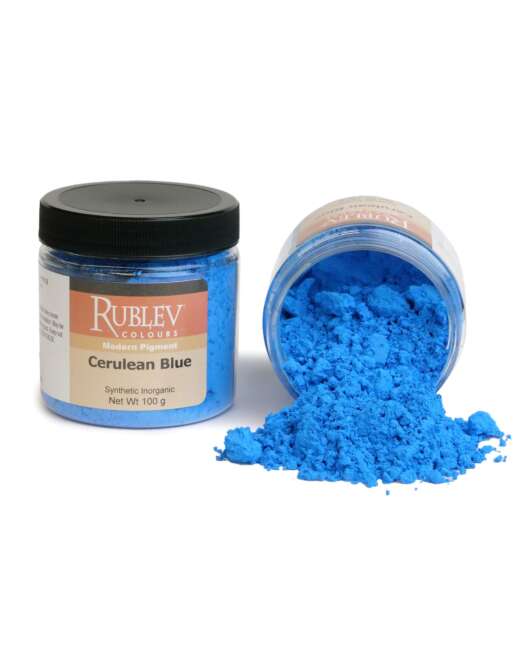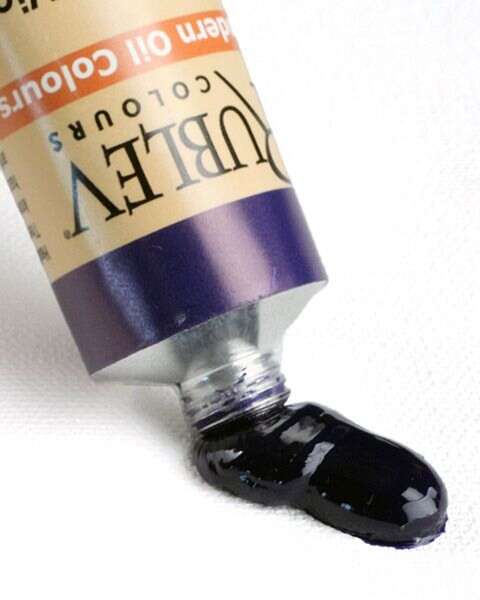Gilbert Stuart’s Palette

Gilbert Charles Stuart (born Stewart) (December 3, 1755–July 9, 1828) was an American painter from Rhode Island. According to evidence from various sources, his palette mainly consisted of the following:
| Colors | Equivalents | Notes |
| Antwerp blue | Antwerp blue is a modification of Prussian blue | |
| Yellow ocher | ||
| Vermilion | ||
| Madder lake | ||
| Burnt umber | ||
| Ivory black | ||
| White lead | ||
| Asphaltum and/or Van Dyke brown | Cassel Earth is similar to Van Dyke Brown—both lignite earths. |
All of the pigments on Stuart’s palette have been identified in literature and studies of his paintings. Unfortunately, “Antwerp blue” is an imprecise term, and we cannot determine precisely what it meant in the eighteenth and nineteenth centuries.

George Washington, portrait of George Washington (1732–99) by Gilbert Stuart, March 20, 1797, oil on canvas, 73.5 × 61.1 cm (28.9 × 24.1 in), Clark Art Institute. This portrait was based on the uncompleted Antheneum portrait by Stuart; Peale filled in the uncompleted portions. This copy has been published on page 442 of The Life of George Washington and page 79 of Early American Painters.
When Osborn translated Bouvier’s 1827 book for an American audience in 1845, he reported that Antwerp blue “was a modification of Prussian blue” and should never be used because it will either fade or darken. (Osborn 1845, 3–4) To confuse the issue as to the blue Stuart placed on his palette, in 1809, Dickinson described Stuart setting his palette with Prussian blue but said, “Antwerp blue or Ultramarine blue are preferable in flesh.” (Dickinson “Remarks,” I)
Antwerp blue was identified as a copper-based pigment in the early nineteenth century. (de Massoul 1797, Ibbetson 1803, Compendium, 1808) However, Field, writing not much later in 1835, described it as a lighter and brighter form of Prussian blue. (Field 1835, 112) In his 1869 edition of Field’s Chromatography, Salter said the paler tint was due to a higher proportion of an aluminous base (Field 1869, 207–208), while Mallet, in his 1870 edition of Field, mentions the addition of white clay or chalk. (Field 1870)
References
Edwin Ahlstrom, American Artist, Saturday, October 1, 2005.
Obadiah Dickinson, Remarks on painting, vol. I, c. 1835–1846.
George Field, Chromatography; Or, A treatise on colours and pigments: And of their powers in painting, Charles Tilt, 1835, p. 112.
George Field, Chromatography; Or, A treatise on colours and pigments: And of their powers in painting, Thomas Salter, editor, Winsor & Newton, 1869, p. 207–208.
George Field, Chromatography; Or, A treatise on colours and pigments: And of their powers in painting, Robert Mallet, editor, 1870, p. 207.
Julius Caesar Ibbetson, An accidence, or gamut, of painting in oil,
2nd Edition, Harvey and Darton, 1828, p. 8.
Constant de Massoul, A treatise on the art of painting, and the composition of colours: containing instructions for all the various processes of painting, published and sold by the original author, at his Manufactory. Printed by T. Baylis, 1797, p. 180–181.
Laughton Osborn, Pierre Louis Bouvier, Handbook of young artists and amateurs in oil painting: being chiefly a condensed compilation from the celebrated manual of Bouvier... appended, A new explanatory and critical vocabulary, J. Wiley & Son, 1856, p. 3–4.



